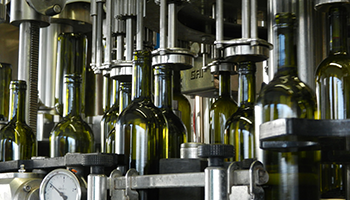Nitrogen and the Wine Production Process
As an inert, colorless, odourless gas which is heavier than air, nitrogen is very popular with winemakers who use it at various stages during the wine production process.
The main purpose of nitrogen in the winemaking process is to remove and prevent oxygen from coming into contact with the wine. Oxygen is generally undesirable in the wine production process due to oxidation and ultimately its impact on wine quality.
Oxidation is an undesirable process primarily because of its effects on wine taste. Oxidation is what occurs when a bottle of wine has been left opened and unfinished for a couple of days - typically by the third day the taste of the wine has gone rancid, sour or vinegar-like, effectively making it undrinkable.
Nitrogen Sparging
Oxygen is naturally dissolved by wine during the fermentation process, so sparging is used to remove dissolved oxygen from the fermented wine. With nitrogen sparging, nitrogen gas is introduced into the wine as very small bubbles. The dispersal of these nitrogen bubbles creates a pressure difference between the nitrogen and the dissolved oxygen which allows the nitrogen bubbles to sweep oxygen out with them when they rise out of the wine.
Nitrogen Flushing
After being fermented then sparged, wine will be stored in tanks or barrels and is often transferred between storage vessels several times as part of a process called ‘soutirage’, which is essentially a process of filtering & fining, used to remove the sediment which forms in the wine as it ages. Nitrogen flushing takes place when the housing pumps and hoses which are used to move the wine between vessels are flushed with nitrogen, flushing out oxygen which could potentially come into contact with the wine and cause oxidation. The vessel which will receive the wine will usually also be subject to nitrogen flushing for the same purpose.
Nitrogen Blanketing
Once a wine is ready to be bottled, it is again important to prevent any oxygen from coming into contact with it during the process. To prevent this, wine bottles are flushed with nitrogen to push out oxygen from the bottle before they are filled with wine. Once the wine is inside the bottle it is then ‘blanketed’ with more nitrogen. Nitrogen blanketing is used to fill the headspace, between the top of the wine and bottle seal, ensuring as little oxygen as possible is in the bottle before it is sealed – this further helps to prevent oxidation occurring within the bottle and ensures that the wine tastes as intended when it is first opened.
Nitrogen Dispensing
Although the wine production process is completed with bottling and storing, there is one more use for nitrogen to prevent wine oxidation after this stage. Sometimes finishing a bottle of wine before it has had a chance to oxidize is not always possible, especially in restaurants and bars where wine is served by the glass. This is why in many restaurants, it is often only possible to purchase more expensive wines by the bottle, rather than by the glass, as the restaurant doesn’t want to run the risk of the wine turning before the remainder has been purchased. Fortunately, nitrogen gas can be used to solve this problem. Many bars and restaurants now use wine preservation & dispensing equipment which allow them to keep open bottles of wine for longer by blanketing the remaining headspace, after each pour, with nitrogen gas. This not only protects the wine from oxidation, but also extends its life by 6 weeks or more – long enough to sell it by the glass and avoid wastage.
Nitrogen is an important gas for any winery which wants to protect their wine from oxidation. If you use nitrogen sparging, nitrogen flushing or nitrogen blanketing for wine production, a nitrogen gas generator is the most convenient & economical method of gas supply, allowing you to generate your own nitrogen on demand, day after day, year after year, for a fraction of the cost. If you would like to eliminate nitrogen tanks or cylinders from your winery, free up time and money wasted on ordering, renting, moving and storing them, switch to a nitrogen gas generator today. Contact us now to get started.
You can view our nitrogen generation solutions for wine production here.

Wine Production
Is nitrogen better for wine production than argon?
Posted in all news on May 20 2019Nitrogen and argon can both be used for wine blanketing, purging tanks, and flushing so they are…
Read MoreHow much could you save on nitrogen gas cost?
Posted in all news on July 04 2019Find out now with our quick and easy nitrogen cost savings calculator! At Peak Gas Generation we…
Read MoreSavings Calculator
Majority of industries buy nitrogen gas supplies via nitrogen cylinder packs, others meet their needs through liquid nitrogen dewars, micro-bulk tanks or bulk liquid nitrogen delivery. There is a better, more sustainable & safer option. Reduce the cost of nitrogen gas to your organisation & become self-sufficient. Find out how much you can save with a Peak nitrogen generator system.
- liquid/bottled N2Cost of liquid/bottled N2
- InvestmentInvestment cost
- TransportTransport cost
- ServiceService cost
- LeaseLease equipment
- EnvironmentalEnvironmental Tax
- EnergyEnergy cost

